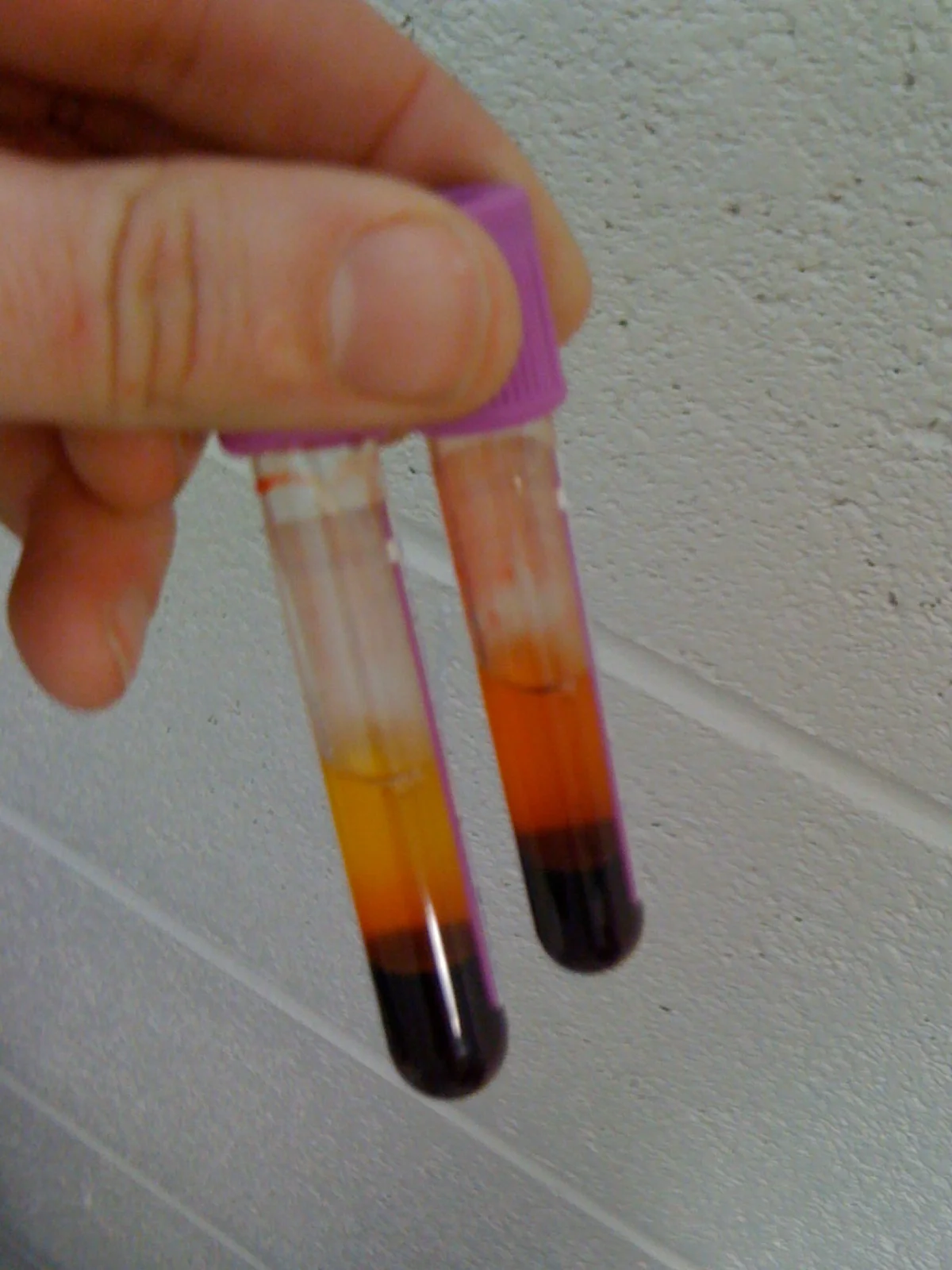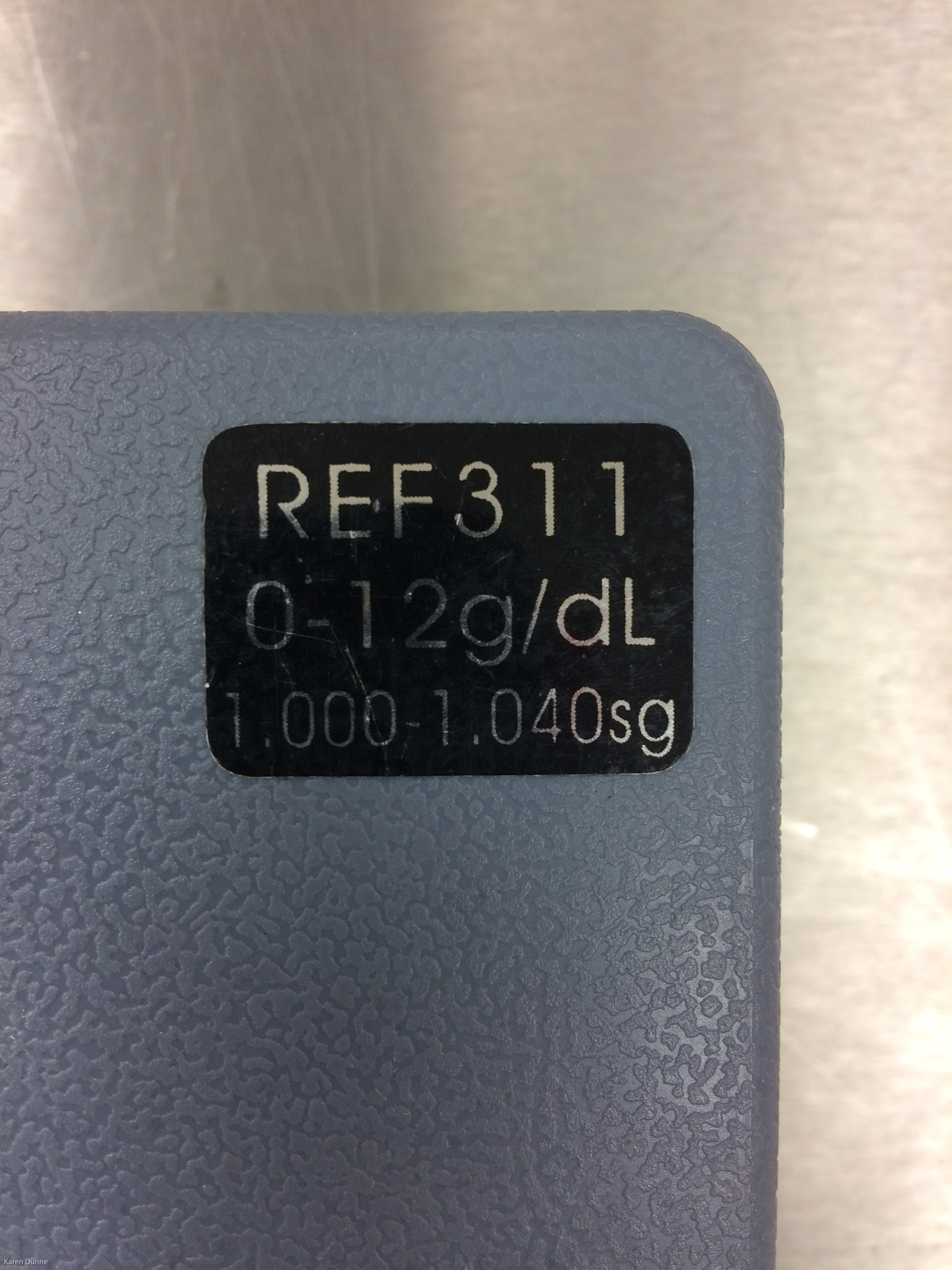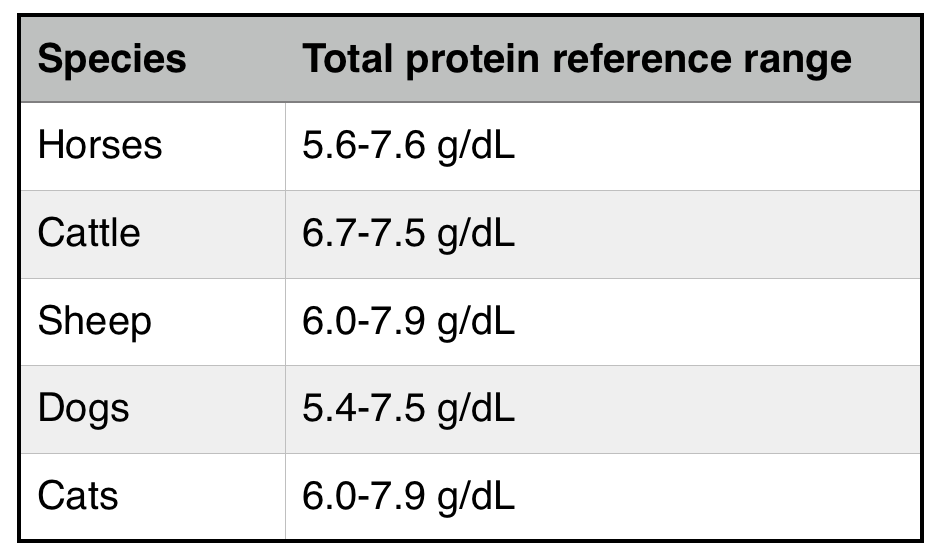Total Protein (TP)
Terminology
A total protein (TP) assay is a measurement of the proteins found in plasma (the liquid portion of the blood). The majority of plasma proteins are produced by the liver (Sirois, 2015).
If a plasma sample is used to obtain the TP result then it will contain fibrinogen values. Whereas if a serum sample is used the TP result will be slightly lower, as the fibrinogen was removed during the clotting process. From a patient care point of view this difference is too small to make any meaningful change to the treatment of the case. It is just important for you to be aware of this difference and note whether the TP result was based on a serum or plasma sample.
Serum is obtained when a blood sample is placed in a plain tube. The lack of anticoagulant means that the blood will clot, separating the serum from the clump of blood cells, platelets and fibrinogen within the sample tube. The sample can be centrifuged to push the clot to the bottom of the container and make it easier to draw off the serum for testing without disturbing the clot and thereby contaminating the sample.
If the blood is collected into a container with an anticoagulant such as lithium heparin, the fibrinogen will remain suspended within the plasma. No clot will form and the sample will have to be centrifuged to separate the plasma from the blood cells. The exception to this is equine blood - the blood cells in this species are heavy enough that they will settle in the bottom of the tube if it is left to stand in a rack before testing.
Visual evaluation
Visual examination of the plasma or serum before testing can detect some abnormalities:
Normal: clear, straw-yellow liquid (horses normally have slightly darker plasma/serum than other species).
Deep yellow/orange: jaundice, liver disease or haemolysis.
Red: haemolysis, either due to clinical disease or poor sample collection and/or storage, aged samples.
Milky white: lipaemia, due to a recent or high-fat meal, liver disease, pancreatic disease.
Visual plasma evaluation
The sample on the left is normal equine plasma (deep yellow) while the sample on the right is haemolysed (red-tinged).
TP measurement
Plasma protein assays can be performed either using a refractometer or an automated biochemistry analyser. Total plasma protein can be measured using the plasma present in a capillary tube or sample container that has been centrifuged. If using a capillary tube carefully snap it between your fingertips above the level of the buffy coat and red blood cells. Place the plasma on to the stage of a clinical refractometer and look through the eye piece to read the result.
Depending on the model of your refractometer, you will use the scale labelled TP, SP or TS column (usually the one on the right). See the illustration below. The result is reported as g/dL (g/100ml). The total protein range may be printed on the lid of the refractometer case for convenience. Compare the result to the normal reference range for that species. Sometimes the total protein normal reference ranges are given in g/L, so if your result is in g/dL, you will need to multiply it by 10 to convert g/dL to g/L (a decilitre is 100ml so it is 1/10th of a litre, 1000ml).
Note: I prefer to use the term total protein (TP), as it can refer to the result obtained from either a serum or plasma sample (see terminology section above). However, some equipment may be marked with SP (serum protein), or TS (total solids) even though either serum or plasma may be used to obtain a reading. It’s important to check your equipment and sample carefully and record the results accurately and in full to avoid confusion.
Causes of elevated plasma protein (hyperproteinaemia): dehydration, chronic inflammation.
Causes of lowered plasma protein (hypoproteinaemia): malnutrition/starvation, failure of passive transfer (in neonates), over-hydration, congestive heart failure (with oedema), severe liver or kidney disease, intestinal malabsorption, blood loss, burns.
Reference
Sirois, M. (2015). Protein Assays and Hepatobiliary Function Tests. In: Laboratory Procedures for Veterinary Technicians, 6th ed. St. Louis: Elsevier, pp.196-202.
Refractometer TP units
This refractometer measures total protein in g/dL on a scale from 0-12.
TP result
In this example the total protein is read from the left hand scale (labelled S.P). The result is 6.6g/dL (g/100ml).
Values from the Merck Veterinary Manual




